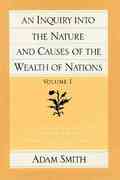Question
Consider a variant of Hotelling's model of electoral competition that models the choices of product characteristics by competing firms. The set of positions is the
Consider a variant of Hotelling's model of electoral competition that models the choices of product characteristics by competing firms. The set of positions is the range of possible characteristics for a product, and the citizens are consumers rather than voters. Consumers' tastes differ; each consumer buys (at a fixed price, possibly zero) one unit of the product she likes best. Each firm's objective is to maximize its market share. (Note that this objective differs from the objective of the parties in the model of electoral competition. A party wants to obtain more votes than the other parties, not to maximize its number of votes.) (a) Show that when there are two firms the unique Nash equilibrium is (m, m) (that is, both firms offer the consumers' median favorite product). (b) Show that when there are three firms there is no Nash equilibrium. (Hint: Start by arguing that when there are two firms whose products differ, either firm is better off making its product more similar to that of its rival.)
Step by Step Solution
There are 3 Steps involved in it
Step: 1

Get Instant Access to Expert-Tailored Solutions
See step-by-step solutions with expert insights and AI powered tools for academic success
Step: 2

Step: 3

Ace Your Homework with AI
Get the answers you need in no time with our AI-driven, step-by-step assistance
Get Started


